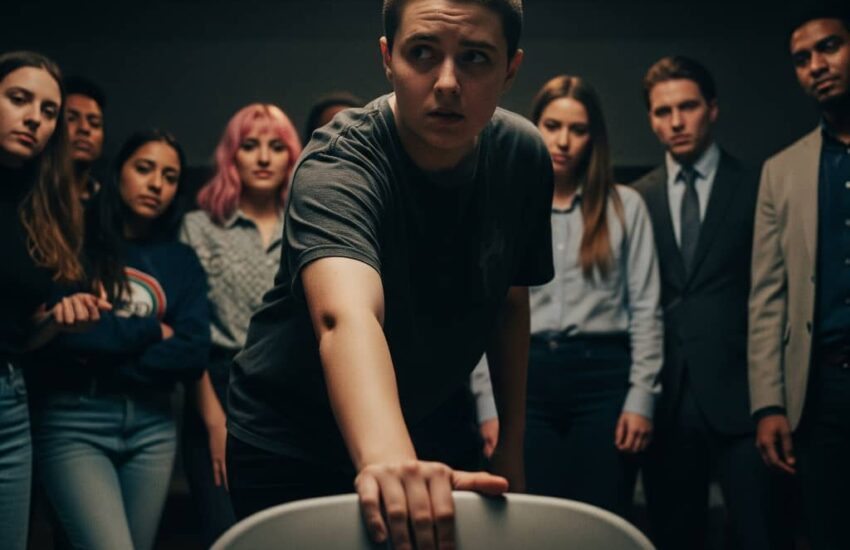Uncover how psychodrama therapy uses role-playing and storytelling to help people rewrite their personal narratives, one acted-out scene at a time. I’ll never forget the first time I witnessed a psychodrama session. A woman in her forties stood in the center of a circle, hesitantly recounting a childhood memory. The therapist handed her a scarf and said, “Show us, don’t just tell us.” What unfolded next wasn’t just storytelling, it was a full-body emotional breakthrough that left everyone in the room breathless. That’s the power of psychodrama: it doesn’t let you intellectualize your pain. It demands you live it, move through it, and ultimately, transform it.
The Theater of Healing
Psychodrama turns therapy into a three-dimensional experience. Unlike traditional talk therapy where you describe your struggles from a safe distance, psychodrama invites you to physically recreate pivotal moments. A man grappling with workplace anxiety might role-play confronting his overbearing boss. A survivor of trauma might reverse roles with their younger self.
The magic happens in the embodiment. When you’re not just talking about fear but actually shaking with it, not just recalling anger but pounding a cushion with it, the healing becomes visceral. I once watched a veteran with PTSD finally release decades of suppressed grief when he physically enacted saying goodbye to fallen comrades, something he’d never allowed himself to do.
The Cast of Your Inner World
One of psychodrama’s most fascinating tools is the use of auxiliary roles. Participants select group members to represent key people in their drama or even parts of themselves. A woman struggling with self-criticism might have one person play her “inner critic” while another embodies her neglected creativity.
The brilliance lies in the role reversals. When the perfectionist business executive steps into the role of his exhausted inner child, the insights come not through analysis but through lived experience. “I always thought my drive was about ambition,” one participant realized mid-scene. “But right now, I can feel it’s really about fear.”
Empty Chairs and Second Chances
The classic psychodrama technique of the empty chair allows conversations that never happened or happened painfully. A grieving daughter might finally tell her late mother everything she wished she’d said. An abandoned partner might confront their ex’s empty chair and then switch seats to respond as they’d always hoped their ex would.
What looks like simple role-play is actually neural reprogramming. The brain processes these enacted experiences similarly to real ones, creating new emotional pathways. I’ve seen people emerge from these dialogues standing taller, their voices steadier, as if an invisible weight had been lifted.
Beyond the Individual: Healing in Community
Unlike individual therapy, psychodrama leverages the healing power of the group. When one person enacts their story, others often see reflections of their own struggles. A man’s portrayal of marital conflict might resonate with three other group members, sparking a collective catharsis.
There’s profound medicine in being witnessed without judgment. After a particularly raw session where a participant reenacted a childhood humiliation, someone whispered, “Me too.” That simple acknowledgment and the group hug that followed did what years of medication and talk therapy hadn’t.
From Drama to Transformation

The ultimate goal isn’t just emotional release but rewriting life narratives. Participants don’t just revisit painful scenes, they get to change the ending. The abuse survivor who always froze in fear gets to practice fighting back. The people-pleaser rehearses saying no.
What makes psychodrama uniquely powerful is its immediacy. Insights don’t come in retrospect during a therapist’s office hour, they explode in real time, in the body, with an audience of supportive witnesses. As one participant put it, “For the first time, I didn’t just understand my story differently, I felt it differently.”
Psychodrama proves that some wounds require more than words to heal, they need movement, metaphor, and the courage to step onto life’s stage as both actor and director of your own story.
References
Moreno, J. L. (1953). *Who shall survive? Foundations of sociometry, group psychotherapy, and psychodrama*. Beacon House.
U.S. Substance Abuse and Mental Health Services Administration. (2023). *Psychodrama therapy and its role in mental health treatment*. SAMHSA National Helpline. https://www.samhsa.gov
Kipper, D. A., & Ritchie, T. D. (2003). The effectiveness of psychodrama: A meta-analysis. *Group Dynamics: Theory, Research, and Practice*, 7(1), 13–25. https://doi.org/10.1037/1089-2699.7.1.13
Moreno, J. L. (1921). Psychodrama: A method of therapy. *American Journal of Psychiatry*, 77(3), 361–364.
Recovery.com. (2024, February 22). Understanding psychodrama therapy: Techniques and benefits. https://recovery.com/resources/understanding-psychodrama-therapy-techniques-and-benefits/
U.S. Department of Health and Human Services, National Institutes of Health. (2022). *Group therapy and psychodrama in trauma treatment*. https://www.nih.gov/news-events/nih-research-matters/group-therapy-psychodrama-trauma-treatment

